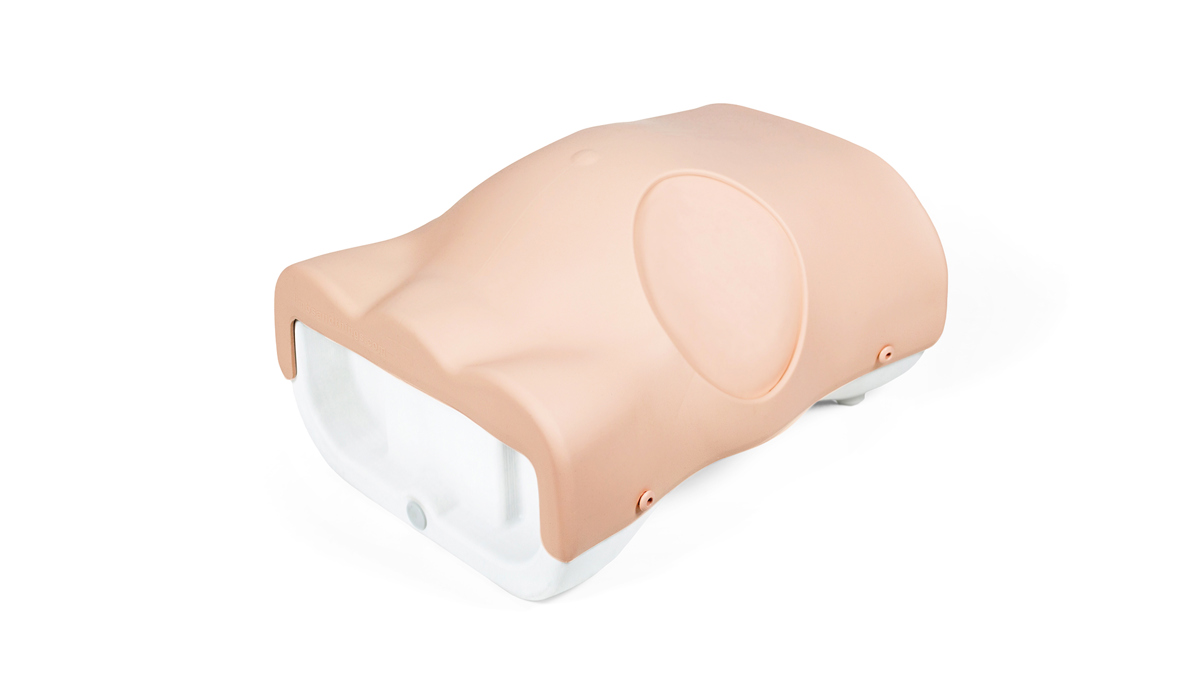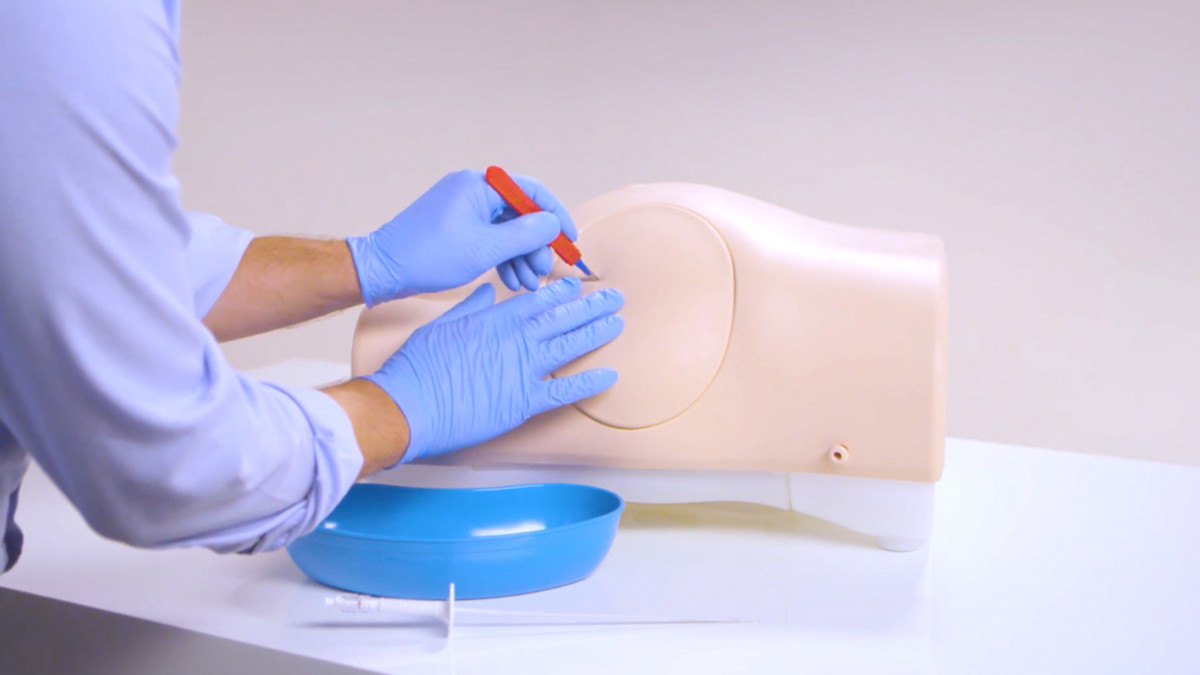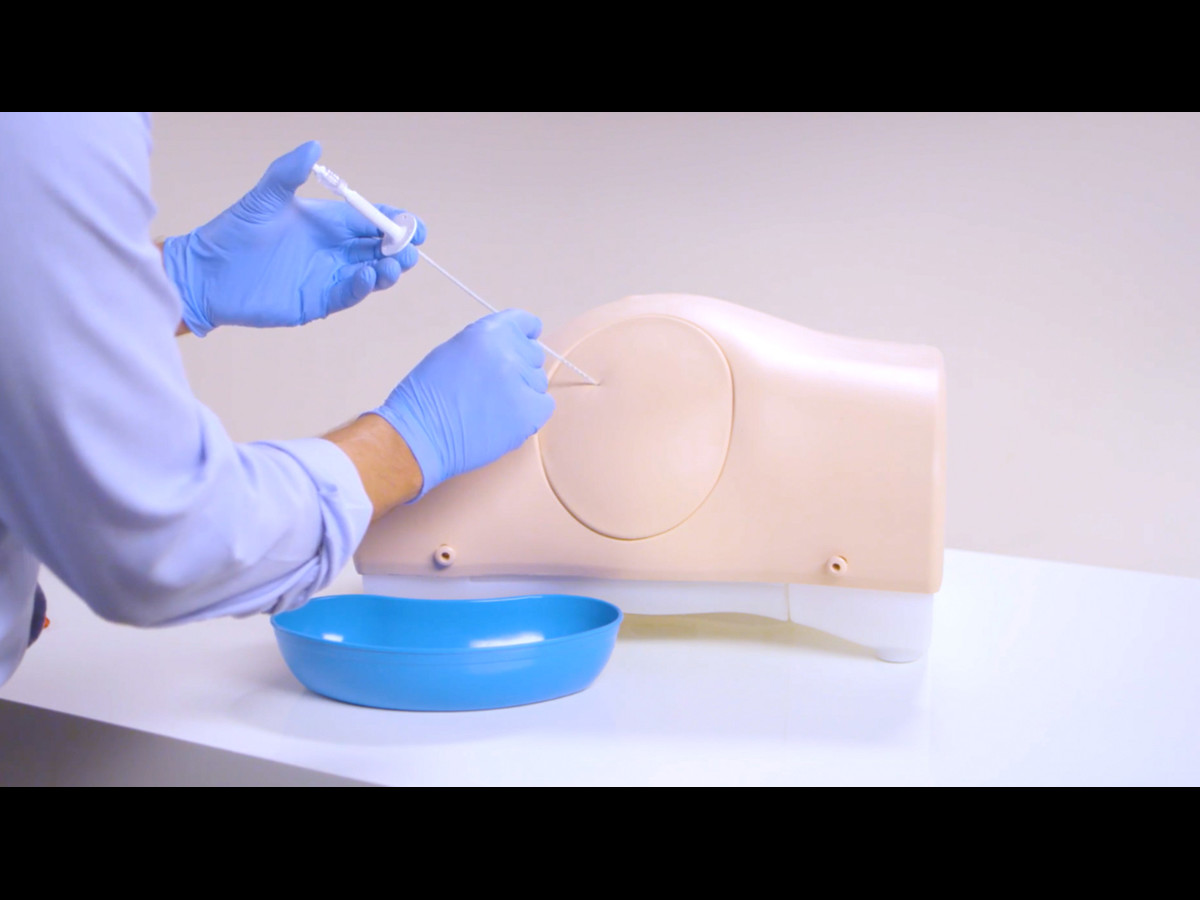














The Paracentesis Trainer offers dual functionality for diagnostic and therapeutic procedures. Palpation or ultrasound guided techniques can be used in the lower abdominal quadrants for the insertion of the needle and catheter while avoiding the liver, spleen and bowel.
Effective simulation training is essential, as paracentesis is a common procedure that’s practiced across a wide range of disciplines around the world.
Echolucent pads and Echogenic organs inside the trainer give trainees the opportunity to become familiar with the internal anatomy under ultrasound, and recognizing how to safely insert a needle or catheter into the peritoneal cavity.
Overview
- Offers dual functionality of palpation guided and ultrasound guided techniques for diagnostic or therapeutic procedures
- Echogenic organs allow for visualization of the internal anatomy before carrying out ultrasound guided paracentesis procedures
- Paracentesis simulator is compatible with all ultrasound machines
- Large capacity water chambers for drainage practice
- Cost effective consumable pads
Realism
- Realistic tissue and needle response
Versatility
- Paracentesis Pads are self-sealing and can withstand multiple needle insertions and rocket catheter insertions
- Suitable for both palpation and ultrasound guided techniques
Cleaning
- Drain all water from the trainer (recommended technique is shown in the user guide)
- Clean skin surfaces with a soft damp cloth, warm water and mild detergent to remove ultrasound gel after use
- Allow trainer, tubing and inserts to dry thoroughly before storing
Safety
- This product is latex free
- WARNING: When the paracentesis simulator chambers are filled with water, product weight can increase by around 7kg in weight
- Ensure retaining knobs are tightened to avoid leakage
- Do not over pump system, excess pressure may cause leakage
- Please note: Paracentesis Pads included in this simulator are subject to a limited warranty of 9 months from invoice date, due to the nature of materials used in the manufacturing process. Remaining parts are subject to the Standard Limbs & Things Warranty
Simulated Patient
- This product can be used with a simulated patient
Anatomy
- Torso featuring bony landmarks (pubis symphysis, iliac crest) and umbilicus
Internal anatomy includes:
- Liver
- Bowel
- Spleen
- Floating Bowel
Skills Gained
- Familiarity with the abdominal region and underlying anatomy
- Palpation of anatomical landmarks
- Identification of abdominal organs under ultrasound, including floating bowel sign
- Identification of ascites.
- Insertion of needle or catheter insertion into the peritoneal cavity to obtain ascitic fluid for diagnostic or therapeutic purposes
- Palpation guided needle insertion
- Ultrasound guided needle insertion
- Professional-to-Patient communication when used with a standardized patient
Product Contains
Also supplied:
- Paracentesis Base Unit
- Carry Case
Works with the following products:
References
SURGICAL COUNCIL ON RESIDENT EDUCATION, Curriculum Outline for General Surgery 2017–2018 Operations/Procedures... Paracentesis
Joint Royal Colleges of Physicians Training Board, Curriculum for Internal Medicine (2019) pg.32: Internal Medicine stage 1 -procedural skills in which a trainee must become proficient – Abdominal Paracentesis
Interventional Radiology Specialty Training Curriculum, The Royal College of Radiologists, 2019. Drainage of fluid collection, treatment of pneumothorax, management of cirrhosis.
Clinical Radiology Specialty Training Curriculum, The Royal College of Radiologists, 2019. Ascites.
-
User Guide
Paracentesis Trainer
PDF | 2.1 MB
-
User Guide
腹部穿刺模型
PDF | 2.3 MB
-
Product Brochure
Paracentesis Trainer - INT
PDF | 581.4 KB
-
Product Brochure
Simulador de Paracentesis - ES
PDF | 757.4 KB
-
Product Brochure
Trainingsmodell für Parazentese - DE
PDF | 756.5 KB
-
Product Brochure
Simulateur pour Paracentèse Abdominale - FR
PDF | 758 KB
-
Product Brochure
穿刺术培训模型 - CN
PDF | 836 KB
How much peritoneal fluid can I aspirate per training session?
Each of the two water cavities can hold up to 3.5l of “peritoneal” fluid at a time. However, using the large volume refill system, allows you to top up levels during training with minimal downtime.
NOTE: Take care when moving the model, with both cavities filled to capacity, the trainer’s weight can increase by around 7kg.
Can trainees practice injecting fluids into the abdomen?
Though it would be possible to inject fluids into the paracentesis pads, we do not recommend it. Introducing fluid or air to the pads can compromise the material inside, leading to a reduction in its lifespan. To practice the administering of anesthesia, we would recommend using an empty syringe.
Why does the Paracentesis Trainer not offer the option to perform midline procedures?
During the development stages of a product, we conduct market research with medical professionals in related fields. Following feedback on the Paracentesis Trainer, left lateral and right lateral approaches were deemed to be the most common in practice, and therefore the most important for this trainer.













